Why currant bushes dry out and what to do to solve the problem
Many gardeners grow currants on their plots and cottages. This shrub with tasty and healthy fruits is hardy and undemanding in care. However, if you regularly violate the rules of agricultural technology, you may encounter problems, the most common of which is drying of the leaves.
The reason why currant leaves dry out may be unfavorable weather conditions, improper care, or damage by diseases and pests. In the article we will tell you in more detail about why currants dry out and what to do to save the bush.
Poor conditions and care
Unfavorable climatic conditions and violation of agricultural practices often cause currant leaves to dry out.. At the same time, a change in the type of green mass is a symptom that indicates serious violations.
Dried twigs and leaves indicate a violation photosynthesis, problems with the root system or lack of nutrients.
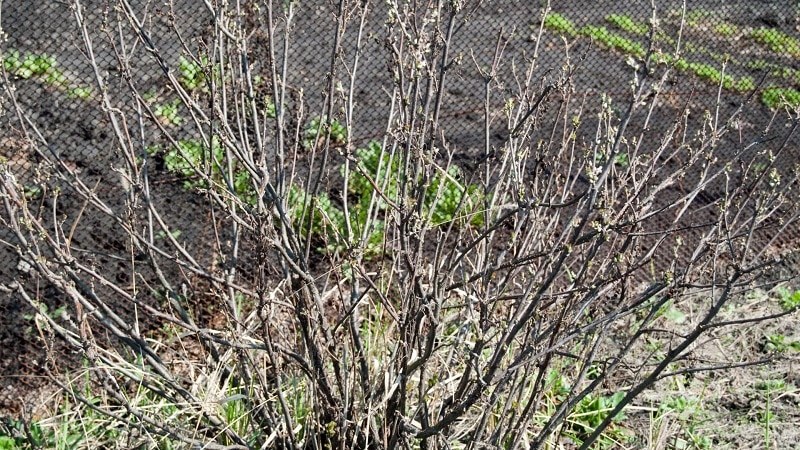
Dry soil
In hot, dry weather, currants do not receive enough liquid from the soil. The roots begin to dry out, and the currant bush no longer absorbs nutrients. Therefore, in the dry season the shrub needs additional watering. In the absence of precipitation, currants are watered once a month. 2-3 buckets of water are poured under each plant.
Fluid stagnation
During the rainy season, there is a high risk of fluid stagnation. When there is a lot of rainfall, currants are not watered.To avoid stagnation of liquid, loosen the soil after each watering and precipitation. When planting, a drainage layer 5 cm thick is poured onto the bottom of the hole. Another way to avoid stagnation of liquid is to mulch the soil around the currant bush.
Violation of watering rules
If the watering rules are violated, the currant leaves also begin to dry out. If you use ice water rather than warm, settled water, the roots will rot. Because of this, nutrients will not be absorbed. Watering during solar activity will cause burns to appear on the leaves, which look like dry spots. Therefore, water currants early in the morning or in the evening.
Nutritional deficiencies
3 years after planting, the soil in which currants grow is depleted. Due to the fact that the plant does not receive the required amount of elements, the leaves and branches of the currant dry out. To provide the plant with nutrition, from the third year after planting it is fed 4 times per season. Fertilizers must contain nitrogen, phosphorus, potassium, magnesium, manganese, boron and calcium.
Drying due to disease
Black, red and white currants are hardy crops. For violations of care rules to affect the condition of the crown, they must be serious and regular..
Much a more common cause is infection. To cope with the problem, it is important to promptly recognize what exactly the bush is sick with and determine the method of treatment.
Anthracnose
Anthracnose is a fungal disease. Most often it affects red currants. The epidemic usually occurs at the end of June or in the first half of July.
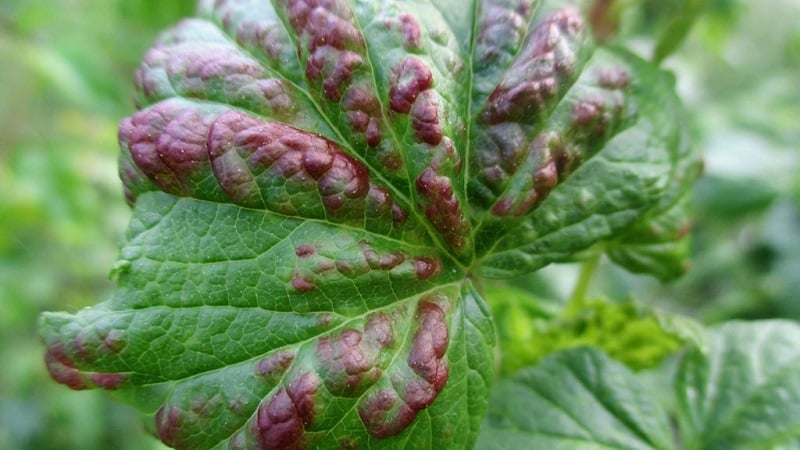
Symptoms of anthracnose:
- Small red spots appear on the leaves.Over time, they begin to blur and increase in size.
- The spots spread to the branches. The shoots dry out and die.
- The leaves dry out, the spots become dark, almost black. Premature leaf fall begins.
Without timely treatment, photosynthesis is disrupted and leaves fall off.. The frost resistance of the plant decreases. Often, currants infected with anthracnose do not survive the winter.
To get rid of the disease, the affected leaves are torn off. The shrub is sprayed with colloidal sulfur, copper sulfate or fungicide. The procedure is carried out every 10 days until the plant is cured.
Tuberculariosis
The causative agent of tuberculosis is considered to be a fungal infection. This disease often causes currants to dry out.
The infection affects the bush through damage to the bark. Young plants become sick first, and then the fungus spreads to older ones. In winter, the pathogen does not die due to its high frost resistance.
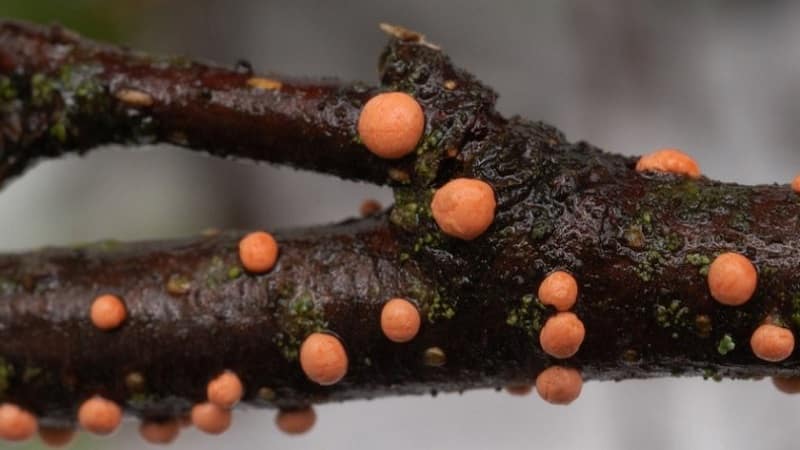
Symptoms of tuberculiosis:
- Bubbling red spots appear on the back of the leaf blades. The defeat begins at the top of the bush, gradually falling lower and lower.
- Spots appear on branches and shoots. They are convex and have a brown tint.
- Leaves and branches turn yellow and dry out. Without treatment, the plant will slowly die.
It is recommended to combat tuberculosis using fungicides (“Captanol”). Before treatment, diseased leaves and shoots are torn off. The cut areas are lubricated with garden varnish.
Effective treatment with preparations containing copper. The most commonly used solution is prepared from 1 tbsp. l. copper sulfate and 10 liters of water.
Note! The fungus overwinters in fallen leaves.To reduce the likelihood of currant infection, every autumn the area is cleared of weeds, fallen leaves and plant debris. The collected waste is removed from the site and burned.
Verticillium wilt
Verticillium wilt is a fungal disease characteristic of nightshade crops.. Previously, it was not dangerous for currants. However, the pathogen mutated and began to infect the black variety of shrub.
Fungal the infection enters the plant through the root system. Blocks the flow of liquids and nutrients into the cells of the bush and releases toxic waste products. This leads to drying out of the branches and green mass and the gradual death of the plant.
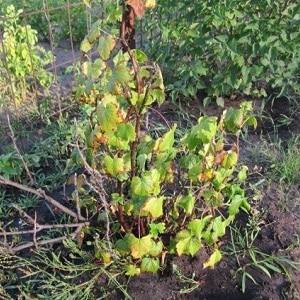 Symptoms of the disease:
Symptoms of the disease:
- The root system quickly collapses and rots.
- Currant leaves become covered with yellow spots, wither and dry out. Intense leaf fall begins.
- Branches and shoots dry out, break and fall off the bush.
Verticillium wilt develops rapidly. The pathogen is resistant to chemicals, so it is impossible to save an infected plant.
To avoid infection currants, it is important to promptly control pests and remove weeds. Timely application of fertilizing and sprinkling of the bush will help increase immunity.
Columnar rust
Columnar rust is the main reason why black currants disappear. Usually the disease affects this particular type of crop; white and red varieties are much less likely to be infected.
The causative agent of columnar rust is a fungus. Its carriers are coniferous trees and sedges.
On affected plants, not only the leaf blades dry out, but also most of the berries.. The plant's frost resistance decreases and they often do not survive the winter.Without timely treatment, the currant dies.
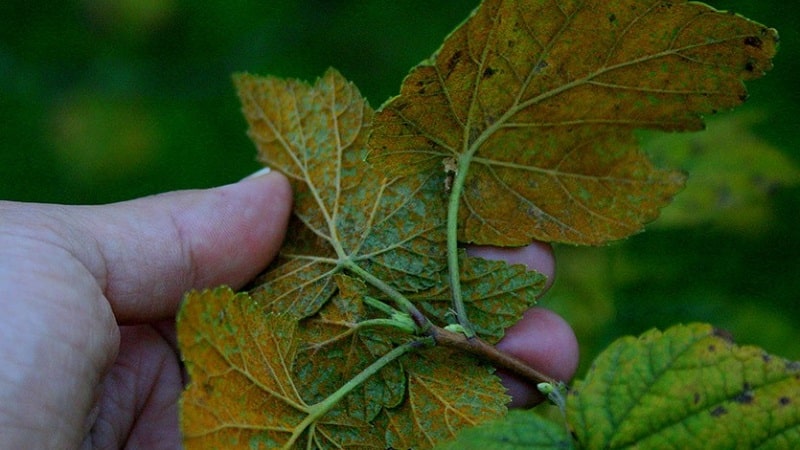
Recognize columnar rust possible according to the following signs:
- Yellow or reddish spots form on the outside of the leaf blade. Gradually they merge and increase in size.
- Orange (rusty) stripes and spots appear on the reverse side of the leaf plate. Soon, pile-like growths form on them, which separate from the leaf and hang in columns. Spots form on shoots.
- Affected leaves and shoots dry out and fall off.
To get rid of the disease, make pruning sick parts. Not only the affected leaves are removed, but also shoots with red spots. The cut areas are treated with garden varnish.
Note! Fallen leaves, branches and other vegetation under the bush are removed. She is taken away from the site and burned. The soil around the bush is treated with Fitosporin or another antifungal drug.
The bush is treated with colloidal sulfur, copper sulfate solution or Bordeaux mixture. Treatments are carried out at least 3 times with an interval of 10 days.
Interesting things on the site:
Folk remedies for powdery mildew on currants
How and with what to fertilize currants in the fall for a good harvest
Currant pests
Pests - another common reason for wilting currant leaves. They not only cause direct harm to leaves and roots, but also cause infection of the crop.
Spider and kidney mites
There are many types of spider mites that infect currants.. These are small pests that are red, black, brown or gray in color.
The mite settles on the back of the leaves, enveloping them in cobwebs. The leaf blades curl into a tube and dry out.
Kidney mites infect currant buds. They also feed on plant sap. The buds become swollen and head-shaped. They produce ugly leaves and deformed shoots. They quickly fade and fall off.
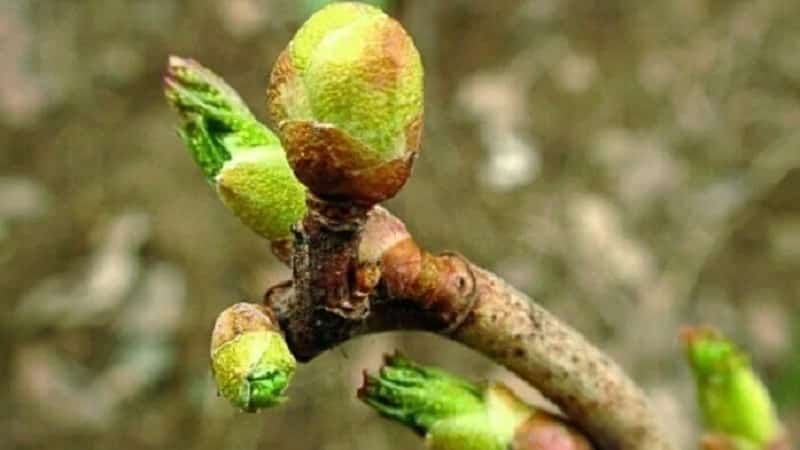
Acaricides are used to control pests "Anti-Mite", "Envidor". Folk remedies are also used:
- Garlic and onion infusion. 1 kg of onion and 200 g of garlic are crushed together with the husks, poured into 10 liters of water and left for 2 days.
- Orange peels. The peels of 5 oranges are poured with boiling water and left for 2 days. Add 30 g of liquid soap to the resulting infusion.
Aphid
Aphids are the most common pest of garden crops.. Settles in colonies on the underside of leaf blades and young shoots.
Aphids feed on plant sap. This leads to the formation of swellings on the leaves and their drying out at the edges. As a result, the affected leaves and shoots fall off.
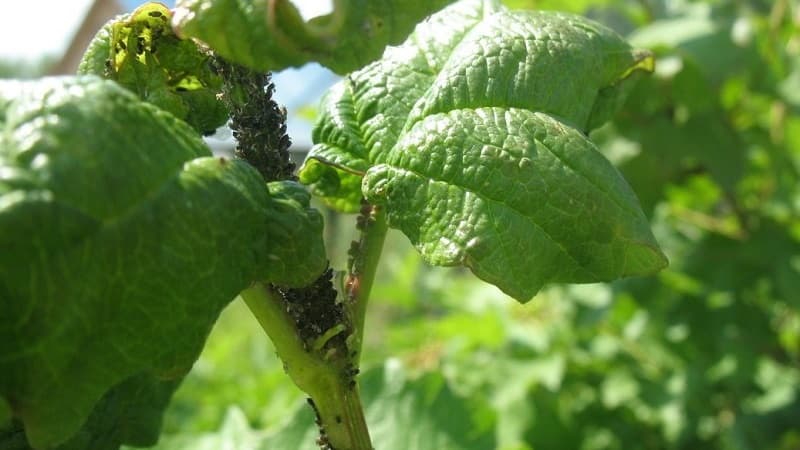
To get rid of the pest, use insecticides “Aktellik”, “Aktara”, “Biotlin” or folk remedies:
- Soap with ash. A piece of laundry soap and 1 kg of ash are dissolved in 10 liters of water. The mixture is sprayed on the bushes until the problem disappears.
- A decoction of herbs – tops of nightshade crops, wormwood, chamomile, yarrow. Fill the bucket 1/3 with grass. The rest of the volume is added with water. The mixture is boiled for half an hour, then left for a day.
- Onion peel. 3 kg of onion peels are poured into a bucket of water. The mixture is brought to a boil and left for two days.
Read also:
Ants and chafers
Ants cause double harm to currants. They build anthills in the roots of the bush, damaging the roots.This leads to the plant not absorbing nutrients.
Also ants become the main cause of aphid damage to currants. They specifically introduce the pest to the plant, as they feed on its waste products.
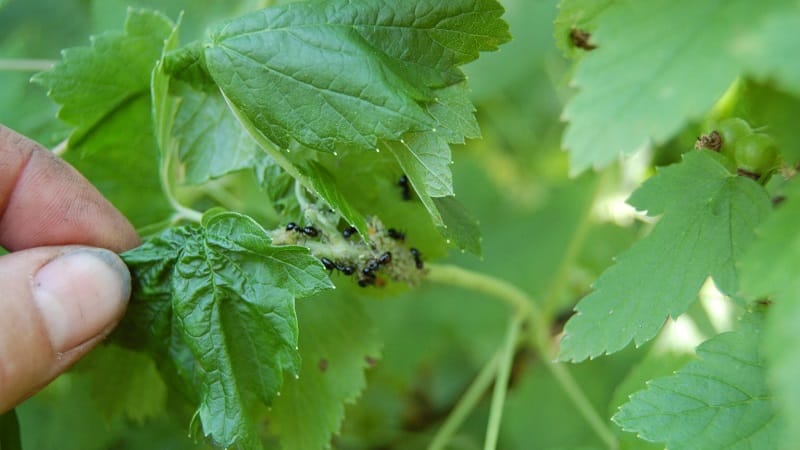
To get rid of ants, use one of the methods:
- Chemicals. There are special preparations for pest control - “Pyrethrum” and “Anti-Ant”.
- Products that emit an insect-repelling odor - cinnamon, unrefined sunflower oil, wormwood, bay leaf, tomato tops. Such “repellents” are placed around the anthill.
- Watering the anthill with boiling water in early spring.
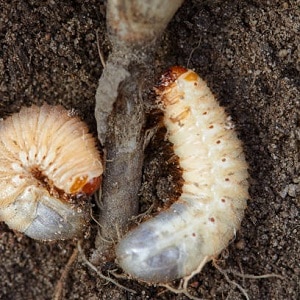
May beetle larvae gnaw currant roots. This leads to wilting of greenery and shoots.
To detect the pest, dig up a bush and inspect the roots.. The larvae are collected by hand and destroyed.
Currants are treated with one of the products:
- "Antikhrushch";
- "Initiative"
- "Vallar."
Glassware
Glasswort larvae live inside branches and shoots. They gnaw passages there, which leads to wilting and shredding of leaves and shedding of fruits.
To get rid of the pest, remove infected branches and escapes. The bush is treated with Inta-Vir.
The soil is loosened. The soil is mixed with black pepper and dry mustard.
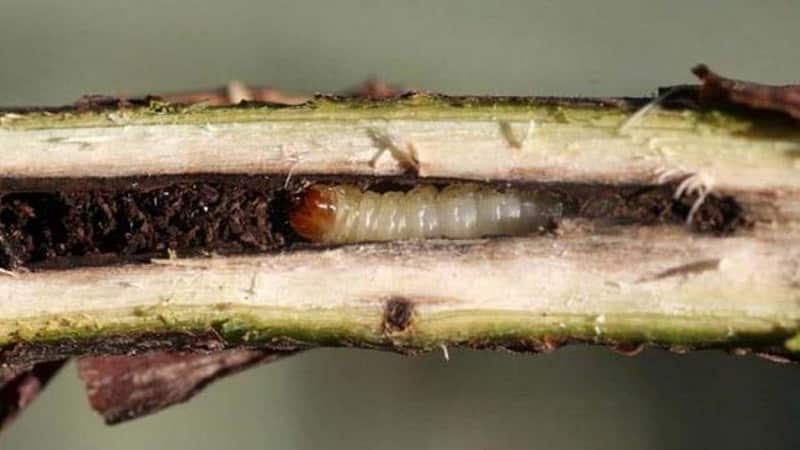
Shchitovka
The scale insect feeds on the juice of currant leaves and shoots. Its larvae attach to the underside of leaf blades along the veins and on branches. The larvae are protected from above by a durable chitinous layer.
Scale insects can be detected not only by drying of leaves and shoots. Upon careful inspection of the bush, the pest itself is noticeable.
Fight with scale insects using insecticides "Colorado", "Tanrek", "Aktara".Another option is to cut off the most affected parts of the plant. After this, spray the currants with kerosene diluted with water 1:1.
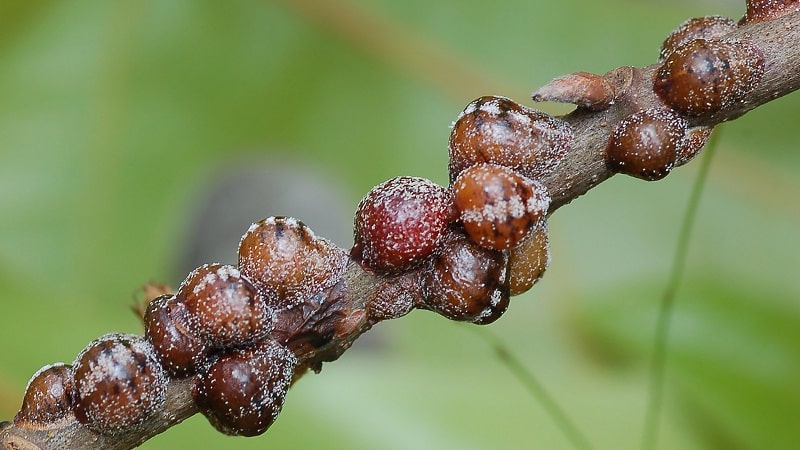
Mole rat and mole cricket
Mole rats are not interested in currants. They feed on potatoes, carrots, beets, legumes and bulbous plants.
Mole crickets are found by burrows in the ground and “mowed” areas of vegetation. To save the crop, natural barriers are built, ultrasonic repellers and special traps are used.
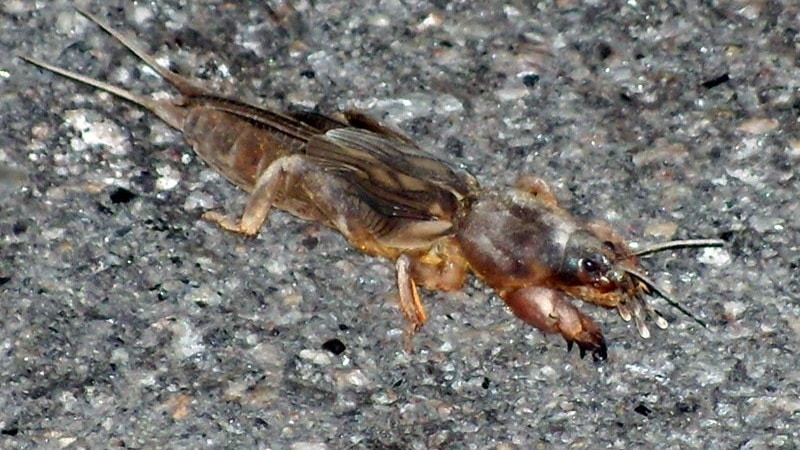
Conclusion
Drying of currant leaves indicates that the plant may die. This problem is caused by unfavorable weather conditions, violation of the rules of care, infection and pests.
To combat the problem, the bush is inspected for signs of disease or insects. If a lesion is detected, the plant is treated and the dried parts are burned. If there are no symptoms, pay attention to caring for the plant. After eliminating the negative factors, the problem disappears.